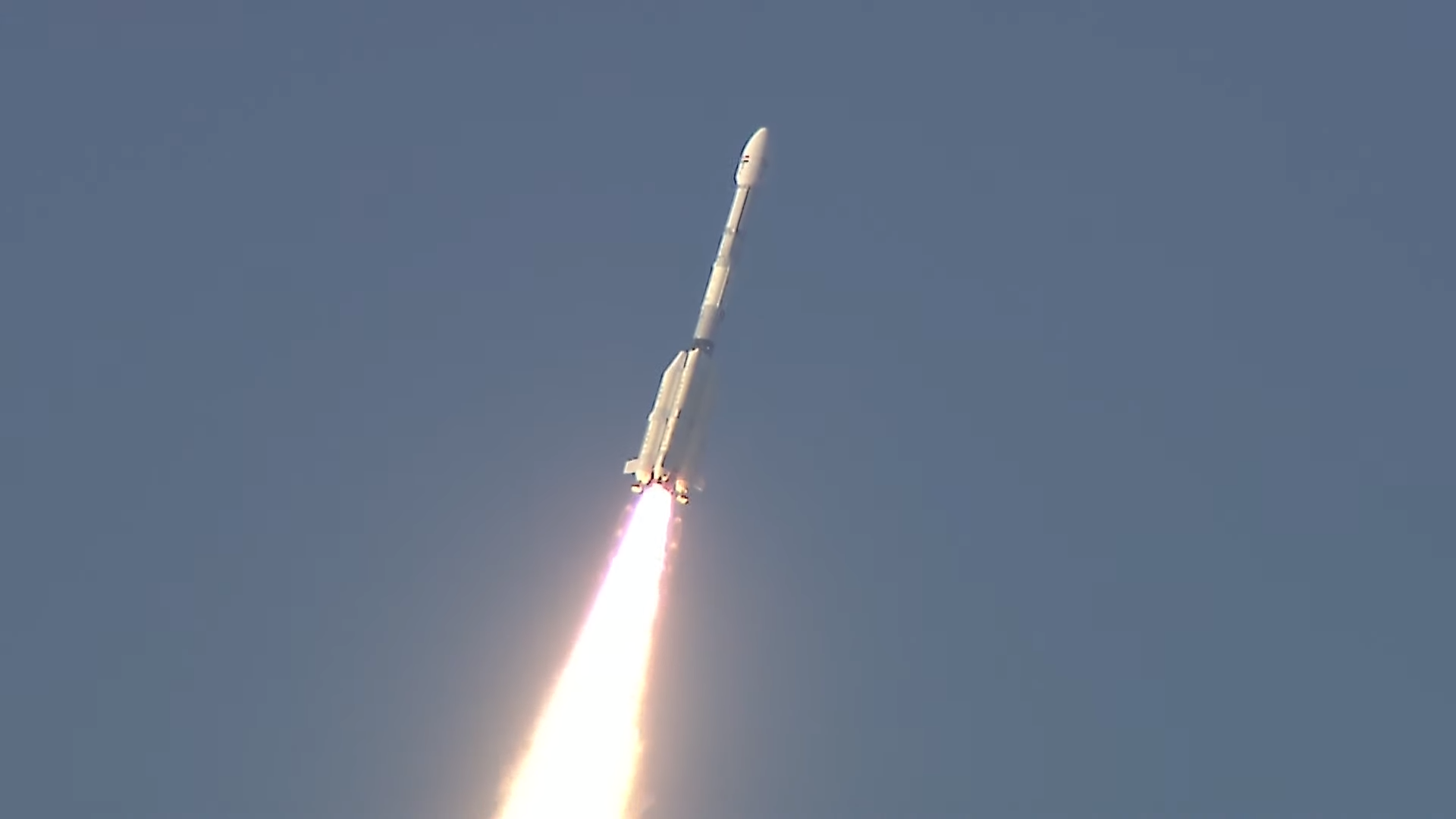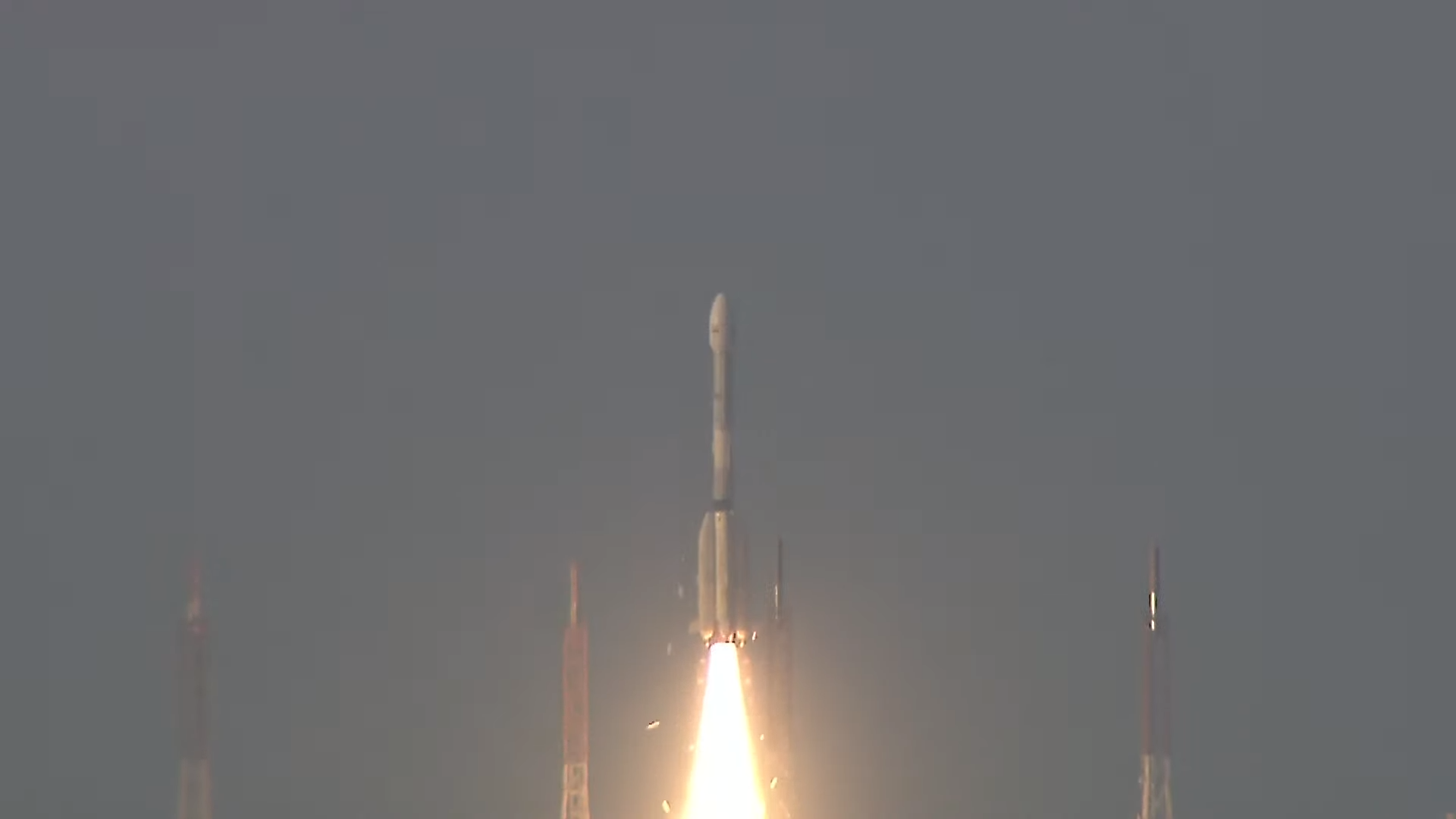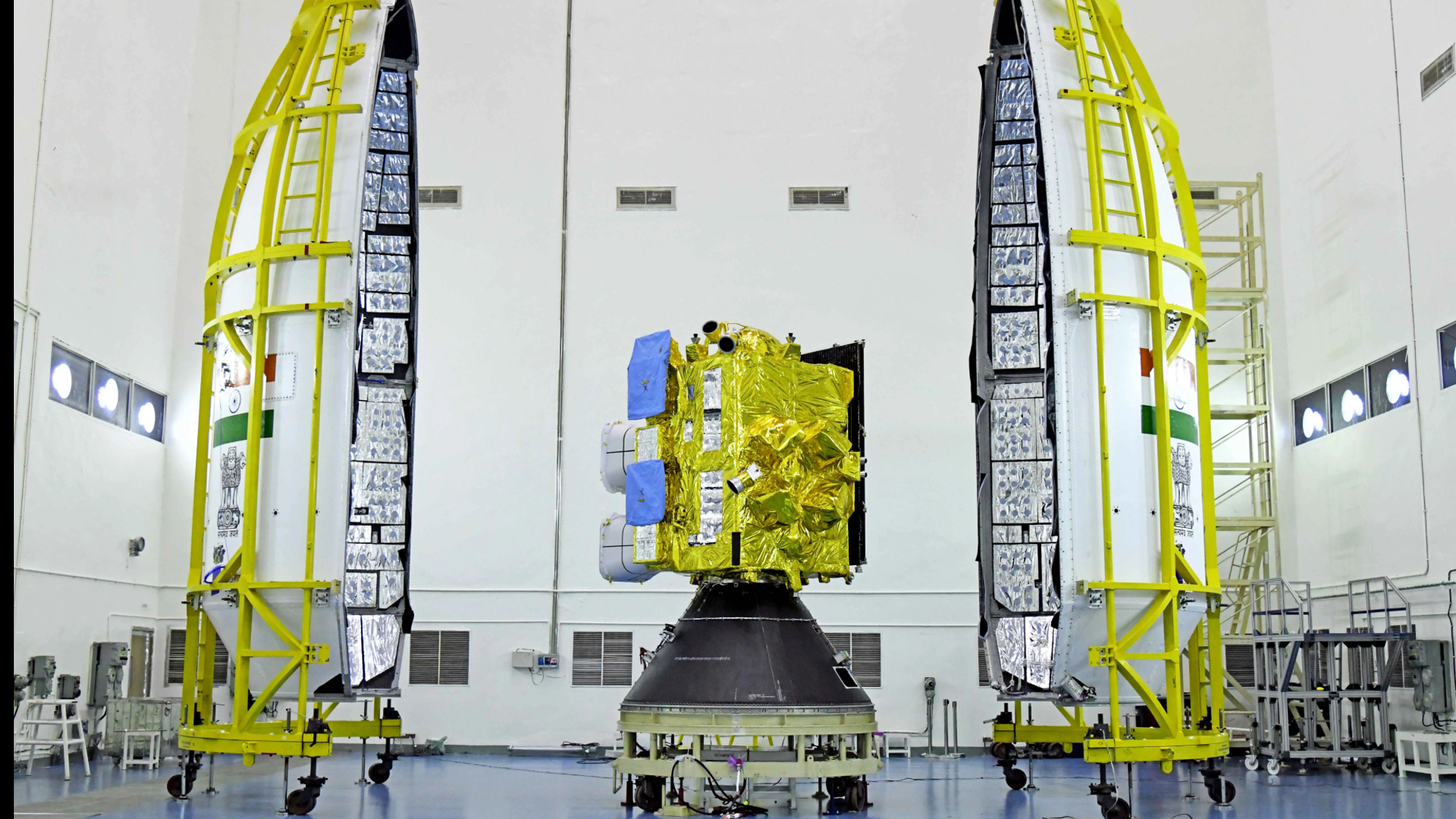India launches powerful new weather satellite INSAT-3DS into orbit on 'naughty boy' rocket (video)
India successfully launched a powerful new weather satellite into orbit early Saturday (Feb. 17) to begin an ambitious mission for
The Indian Space Research Organisation's INSAT-3DS satellite lifted off atop a Geosynchronous Satellite Launch Vehicle (GSLV) on Saturday at 7:05 a.m. EST (1205 GMT; 5:35 p.m. local India time) from Satish Dhawan Space Centre on India's southeast coast.
"I'm very happy to announce the successful accomplishment of the mission GSLV-F14," ISRO chairman S. Somanth said in a post-launch speech, using the mission's numerical name. "The spacecraft has been injected into a very good orbit."



Indian space officials jokingly referred to the GSLV rocket as ISRO's "naughty boy," adding that despite the moniker (the rocket has seen some failures in the past), the rocket had performed exceedingly well during what one official called the cleanest launch campaign yet at Satish Dhawan Space Centre.
"So the naughty boy has now become and matured as a very obedient and disciplined boy," mission director Tomy Joseph said after launch.
In Phots: India's GSLV rocket launch debut in pictures
The three-stage GSLV deployed INSAT-3DS into geosynchronous transfer orbit (GTO) about 18 minutes after liftoff. The satellite will now make its own way to geostationary orbit, which lies 22,236 miles (35,786 kilometers) above Earth.
At this altitude, satellites complete one orbit in the same amount of time it takes our planet to spin once around its axis (one Earth day). Geostationary spacecraft therefore seem to "hover" over the same patch of ground, making this a popular orbit for telecommunications and weather satellites.
Breaking space news, the latest updates on rocket launches, skywatching events and more!
INSAT-3DS falls into the latter category. The satellite, which was funded by India's Ministry of Earth Sciences, "is designed for enhanced meteorological observations and monitoring of land and ocean surfaces for weather forecasting and disaster warning," ISRO officials wrote in a mission description.
"The satellite will augment the meteorological services along with the presently operational INSAT-3D and INSAT-3DR satellites," they added.
Saturday's launch marked the 16th to date for the GLSV, which stands 169.6 feet (51.7 meters) tall and can deliver 4,960 pounds (2,250 kilograms) of payload to GTO.
India's ambitious space program has notched some big successes recently. In August 2023, for example, the nation joined the moon-landing club with its Chandrayaan-3 lander-rover mission.
Less than a month later, India launched Aditya-L1, its first-ever sun-studying probe. And on Jan. 1 of this year, the country lofted the black-hole-studying X-ray Polarimeter Satellite, its first dedicated X-ray astronomy craft.
Editor's note: This story was updated at 7:45 a.m. EST to note the successful launch of the GSLV-14 mission and its INSAT-3DS satellite by the Indian Space Research Organisation.

Michael Wall is a Senior Space Writer with Space.com and joined the team in 2010. He primarily covers exoplanets, spaceflight and military space, but has been known to dabble in the space art beat. His book about the search for alien life, "Out There," was published on Nov. 13, 2018. Before becoming a science writer, Michael worked as a herpetologist and wildlife biologist. He has a Ph.D. in evolutionary biology from the University of Sydney, Australia, a bachelor's degree from the University of Arizona, and a graduate certificate in science writing from the University of California, Santa Cruz. To find out what his latest project is, you can follow Michael on Twitter.

